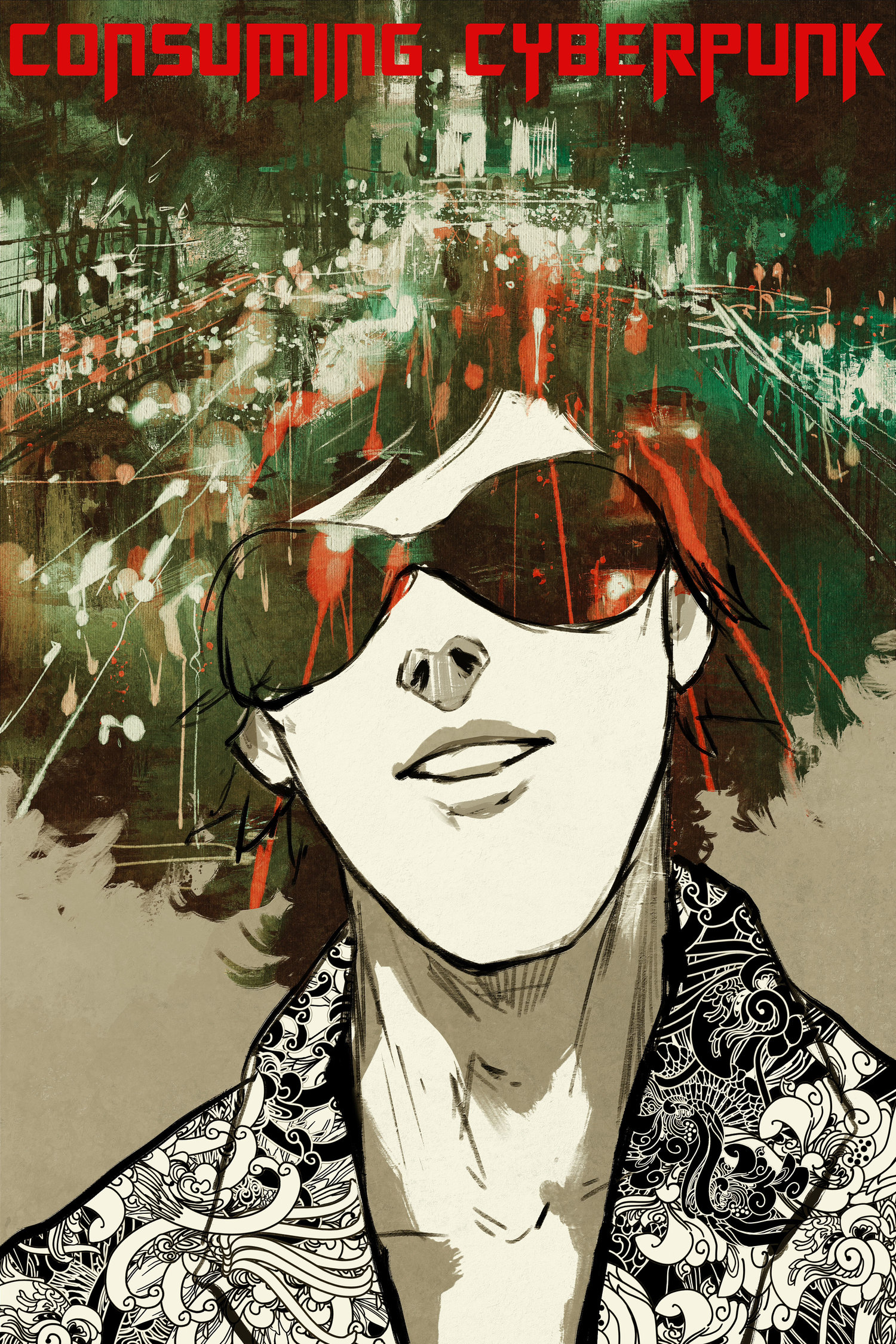Chasing The Moment In The Butterfly Effect
“…the genes from the deep sea that had lit up those eyes in a blue glow, for the brief stretch of her youth, decided to switch off the lights.”
The Butterfly Effect initially spends its time showing you an extrapolated dystopic future reminiscent of Blade Runner. It is filthy, people are starving—scrounging and subsisting off moldy food in a dictatorship run by The Supreme Guide. We follow a character known only as “Captain Old.” He greets a mysterious visitor and takes a case trying to infiltrate and assassinate the dissidents in the abandoned metro. Rather than replicants or androids of some kind, there are bioengineered humans, “dishbabies”, manufactured to fulfill a purpose but not artificial. Their eyes glow blue all the same. There’s a glossary of terms in the back of the book for all the foreign terminology used, a staple of cyberpunk fiction.
“Krava-4 was never sure what a ghost actually is. She had heard that bloodbabies contain a soul — which is like water in a cup.”
But here’s where it departs. Honestly, this Darkland was interesting enough that I’d have been fine reading about a biopunk spin on a Blade Runner world. Instead, as Captain Old ventures into the metro, the narrative jumps back in time. And then it does so again. And then again.
There’s the story of Kar, a P.I in Calcutta who is hired to get to the bottom of a mystery. It seems a group of tourists visited Seoul and haven’t returned. He flies to South Korea to discover what’s happened. We see the tourists’ perspective through the lens of man from Calcutta meeting a mysterious woman who takes over as their tour guide, the whole thing unraveling with romantic undertones.
“It was as if the trees were awake and someone had placed little tea lamps along the trail. Perhaps it was the moss on the gnarled tree trunks that glowed for some reason or it was the light of their eyes reflected by the night. Possibly it was the glow of stardust, a faint sidereal light, a hint that they were all children of the stars.”
In the U.K a scientist dedicates his life to trying to solve world hunger while discussing with his good friend the ethics of how the problem might be solved. A woman flees a prison in North Korea, attempting to find somewhere safe.
“Disease is also a gift. A gift which we could do without. It is the sap of life flowing through nature leaking or spilling out because of our disjointed living.”
Rather than lingering on this dystopia, The Butterfly Effects weaves these stories together to show you how this came to pass, rather than having the meat of the story be Captain Old’s case in the future. It’s a very interesting way to write a cyberpunk/biopunk novel, and it’s challenging. It’s intersectional with climate-fiction, or cli-fi, as well because much of the story takes place in present day. It stops this future moment and traces how Captain Old came to be situated in that time and space, building suspense regarding the multiple questions posed by this grim future.
Yet more of these are seeded throughout. By the end, it is incredibly satisfying to have all these disparate events wrapped together. The structure is similar to Cloud Atlas, in which the short stories break and crash into one another but culminate together. This does something similar as it collapses back to the future with a slight twist to this predictable formula.
“Through the glazed glass hotel window, the electric night was an ocean of light washing over the high rises, a city of desire that had claimed dominion over the night. Looking out reminded him also of the K-pop girls with their smooth faces and coloured hair, belting out their power-packed lines.”
What was more astounding was the level of detail found in these places. From Calcutta to Seoul to the U.K—the colloquialisms, the food—everything shows a focused lens that comes from research. The acknowledgments go into some of that. While some readers may not like the level of granularity, and indeed, sometimes it does drag because of it. But when the story pivots into consolidating all of the plot threads it is all the better for it.
‘Sometimes they are Red Admirals with their bright orange on black wings flapping about wantonly in my frontal lobe, or else they were swallowtails flitting from cerebellum to hippocampus or even a clutch of glowing spliced hesperiadae blushing playfully between my ears ...’

